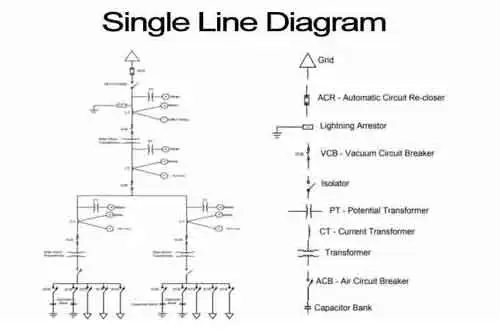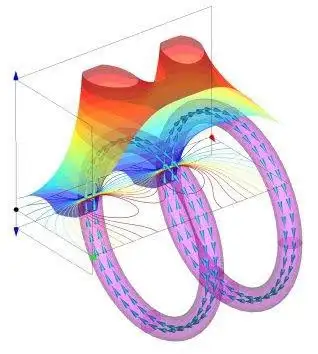Latest Electrical Engineering Articles
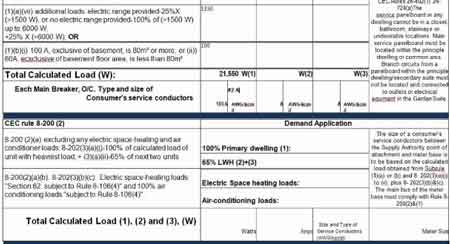
Electrical Load Calculator Explained
Electrical load calculator estimates power demand, ampacity, and panel capacity, guiding circuit sizing, load balancing, voltage drop checks, and NEC-compliant design for residential, commercial, and industrial electrical projects, planning safely.
What Is an Electrical Load Calculator?
Software that estimates electrical demand to size circuits, feeders, and panels per NEC for balanced, efficient systems.
✅ Computes diversified loads for single- and three-phase systems
✅ Supports voltage drop, ampacity, and feeder/panel sizing
✅ Aids NEC compliance and equipment selection
An electrical load calculator is an essential tool for industrial and commercial power professionals. These calculators help determine the total electricity consumption of a facility, playing a crucial role in ensuring safe and efficient system operations. By using one, engineers and technicians can accurately assess the total load to properly size critical equipment like transformers, conductors, and circuit protection devices. This process prevents overloads, minimizes downtime, and supports compliance with safety standards and regulations. Seasoned teams often pair these estimates with insights from the power system engineering discipline to validate planning assumptions.
Residential ones are essential tools for homeowners. They help determine the total amount of electricity your appliances and devices will use, which is crucial for safety and efficiency. By understanding your load, you can ensure your wiring, circuits, and panel are adequately sized to handle the demand. This prevents overloads, which can lead to tripped breakers, damaged appliances, and even fires. Online calculators make this process more accessible, providing a user-friendly way to estimate your home's power needs. Homeowners curious about power factor can explore a phase angle calculator to see how reactive loads influence real power draw.
Appliance-Based Calculation
Every load calculator relies on users inputting the wattage of their appliances to determine the overall load, given the square footage of a home. Think about your kitchen: a refrigerator might use 100-200 watts, a microwave 1000 watts, and a coffee maker 1500 watts. These individual wattages add up! Heating and cooling systems, especially air conditioners, contribute significantly to the load, particularly in warmer climates. Accurately accounting for all appliances, big and small, is key to a reliable calculation.
For broader planning beyond appliance lists, engineers often run a load-flow analysis to evaluate feeder loading and voltage drop across distribution circuits.
In industrial and commercial settings, "appliances" refer to a range of equipment, from heavy machinery and HVAC systems to lighting and computer setups. Each piece of equipment has a specific power requirement, often measured in kilowatts (kW). It allows professionals to input the power consumption of each device and factor in aspects like duty cycle and simultaneous operation. This precise calculation helps determine the accurate total load, ensuring the facility’s power system can accommodate all operational needs without risk of overload. These device inputs ultimately roll into the power system analysis and design process for coherent, code-compliant layouts.
Circuit Breaker Sizing
Properly sized circuit breakers are vital for protecting power systems in industrial and commercial facilities. An electrical load calculator can assist in determining the appropriate amperage rating for each breaker, ensuring that it can handle the circuit’s demand without risk of tripping due to overload. By selecting breakers based on load calculations, facilities can prevent unnecessary disruptions and maintain the safe operation of critical equipment. Complementary short-circuit studies using a short-circuit current calculation confirm interrupting ratings and coordination.
NEC Compliance
The NEC outlines comprehensive guidelines for installations in all types of buildings, including industrial and commercial properties. Electrical load calculators are instrumental in meeting NEC standards, as accurate load calculations ensure that selected equipment and wiring meet code requirements. This compliance is essential for both safety and regulatory adherence, preventing hazards and ensuring that systems are designed and installed according to established standards. In many commercial systems, familiarity with the 480V power and current formula streamlines conductor sizing and overcurrent device selection.
The Importance of Professional Expertise
While electrical load calculators offer a helpful estimation of facility needs, they should not replace the experience of a licensed engineer or technician. Online tools provide general estimates, but only a qualified professional can consider site-specific factors, safety regulations, and industry best practices. By combining the output of a calculator with expert judgment, professionals ensure that the design and operation of systems meet the unique demands of industrial and commercial facilities safely and efficiently. Ongoing competency is supported by structured electrical training that keeps practitioners current with codes and analysis techniques.
An electrical load calculator is an invaluable tool for those managing power systems in industrial and commercial environments. By accurately assessing the power requirements, professionals can size equipment properly, prevent overloads, and ensure compliance with codes like the NEC. This contributes to a safer, more reliable infrastructure, ultimately supporting the facility's operational goals and reducing the risk of power disruptions.
Related Articles
Sign Up for Electricity Forum’s Electrical Engineering Newsletter
Stay informed with our FREE Electrical Engineering Newsletter — get the latest news, breakthrough technologies, and expert insights, delivered straight to your inbox.
Power System Engineering
Power system engineering involves the design, operation, and maintenance of electrical power systems. It ensures efficient energy generation, transmission, and distribution while improving grid reliability and integrating renewable sources across industrial and utility networks.
What is Power System Engineering?
Power system engineering is a specialized field within electrical engineering focused on the safe, reliable, and efficient operation of power infrastructure.
✅ Designs and maintains electrical generation, transmission, and distribution networks
✅ Ensures grid stability, load flow, and fault protection
✅ Supports integration of renewable energy and smart grid technologies
Power System Analysis and Design Course
Arc Flash Analysis/Study Training Course
Power System Fundamentals Course
Short Circuit Analysis/Study Course
The Role of Power Engineers in Modern Energy Networks
Power system engineering plays a pivotal role in designing, optimizing, and maintaining modern electrical networks for industrial, commercial, and institutional electrical systems. As the world transitions to a more sustainable energy future, electrical engineers will continue to be in high demand, addressing key concerns such as energy efficiency, renewable energy integration, power quality, and reliability. With a strong educational background and practical experience, these professionals will shape the future of energy networks and contribute to a more sustainable and reliable world. For complete insight into design practices, visit our page on power system analysis and design.
Load Management for Industrial and Commercial Efficiency
Load management is a key aspect of power system engineering that allows engineers to optimize energy consumption, reduce peak demand, and minimize energy costs in industrial, commercial, and institutional electrical grids. Large facilities can decrease their energy usage, minimize peak demand charges, and contribute to a more stable power grid by implementing effective load management techniques, such as utilizing electronics and power distribution systems. This, in turn, helps electric utilities maintain a reliable electric power supply and efficiently manage their distribution systems. You can also browse our electrical engineering channel or sign up for expert-led power system training to deepen your understanding.
Integrating Renewable Energy
Integrating renewable energy sources into existing electrical grids is another critical aspect of PSE. Key factors to consider during this process include the compatibility of renewable energy sources with traditional electrical generation methods, grid capacity, and the need for energy storage solutions to address the intermittent nature of renewables. Engineers with a strong background in renewable energy and power electronics can design and implement effective solutions to integrate renewables into the electrical grid, reducing dependence on fossil fuels, decreasing greenhouse gas emissions, and promoting a more sustainable energy future.
Power Quality and Electrical Protection Strategies
Power system engineering maintains power quality in industrial, commercial, and institutional electrical systems. Engineers work diligently to prevent voltage fluctuations and harmonic distortions that can cause equipment malfunction and damage. In addition, engineers can effectively mitigate the risks associated with power quality issues by designing and implementing proper electrical protection and grounding networks and employing advanced techniques such as grounding and bonding, load balancing, and load flow analysis. Our power system engineering section explores how three-wire designs support industrial voltage requirements.
Smart Grid Technology and Digital Transformation
Smart grid technologies are rapidly transforming the landscape of PSE. These technologies enable real-time monitoring and control of power networks, allowing for better integration of renewable energy sources, improved energy management, and increased power stability. However, implementing smart grid technologies in industrial, commercial, and institutional electrical equipment also presents challenges, such as increased complexity, cybersecurity concerns, and the need for significant infrastructure investments. Despite these challenges, the benefits of smart grid technologies far outweigh the drawbacks, making them a crucial component of modern electrical systems. To learn how phase-to-phase connections impact system behavior, see our detailed guide on load flow analysis.
Fault Analysis and System Protection Coordination
Fault analysis and protection coordination are essential tasks in PSE, especially in complex grids, including industrial, commercial, and institutional electrical networks. Engineers perform fault analysis to identify potential issues within the grid, such as short circuits, equipment failures, or other malfunctions. Based on this analysis, they design protection schemes that minimize the impact of faults on the overall power network. In addition, protection relays, switchgear, and other equipment are critical in ensuring the safe and efficient operation of electrical equipment.
Ensuring System Reliability for Critical Facilities
Reliability is a primary concern in power system engineering, particularly in critical facilities where an uninterrupted electrical supply is crucial. Engineers employ various best practices to improve reliability, such as regular maintenance, redundant backup electrical equipment, and robust electrical distribution networks. By adhering to these practices, engineers can ensure a continuous electrical supply and minimize the risk of costly downtime.
According to labour statistics, the demand for engineers is expected to grow as the need for efficient and reliable energy increases, particularly in industrial, commercial, and institutional settings. With a strong educational background and practical experience, engineers will continue to play a vital role in shaping a more sustainable and reliable energy future.
Power system engineering is critical in designing, optimizing, and maintaining modern electrical networks for industrial, commercial, and institutional electrical equipment. By addressing key concerns such as energy efficiency, renewable energy integration, power quality, and reliability, engineers are shaping a more sustainable and reliable energy future for these vital sectors.
Optimizing Energy Use with Advanced Engineering Techniques
Engineers often implement energy management strategies to enhance energy efficiency further, leveraging their expertise in electronics, electric motors, and energy storage. By doing so, they can optimize the performance of various electrical equipment, reducing energy consumption and lowering operational costs. This focus on energy efficiency is particularly important in large-scale facilities, where even small improvements can lead to significant savings.
In electric generation, PSE plays a crucial role in ensuring the optimal performance of plants, whether traditional resources or renewable energy sources fuel them. Engineers contribute to the design, operation, and maintenance of electrical generation facilities, ensuring that they operate efficiently and meet the ever-increasing demand for electricity. In addition, as renewable energy resources become more prevalent, electrical engineers will need to adapt and innovate to ensure the seamless integration of these resources into the existing electrical grid.
Transmission and Distribution System Design Principles
Another essential aspect of PSE is the design and maintenance of transmission and distribution grids. Engineers must ensure electricity is efficiently transmitted from electrical plants to end-users, minimizing losses and maintaining power quality. They also need to consider the impact of growing energy demand and the addition of new energy sources, requiring a thorough understanding of transmission line design, transformer design, and three-phase electrical equipment.
PSE also encompasses developing and applying cutting-edge technologies in the energy industry. As a result, engineers working in this field must stay up-to-date with the latest advancements, such as new electronic devices, innovative energy storage solutions, and novel power system engineering approaches. By staying at the forefront of technological innovation, engineers can contribute to the ongoing evolution of industrial, commercial, and institutional electrical grids, ensuring their long-term sustainability and reliability.
Related Articles
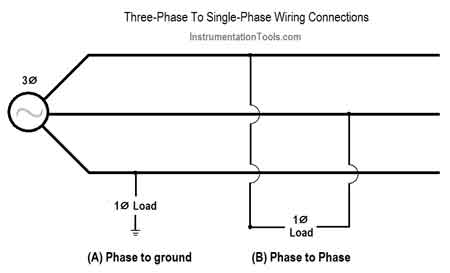
Phase to Phase Connection
A phase to phase connection links two live wires in a multi-phase system, delivering higher voltage than a phase to neutral setup. It's common in industrial power distribution for running heavy electrical loads efficiently.
What is a Phase to Phase Connection?
A phase to phase connection occurs in multi-phase electrical systems, typically three-wire setups, where a connection is made between two live wires.
✅ Connects two energized conductors in a multi-phase electrical system
✅ Provides higher voltage than phase-to-neutral connections
✅ Ideal for powering heavy machinery and industrial equipment
Power System Analysis and Design Course
Arc Flash Analysis/Study Training Course
Power System Fundamentals Course
Short Circuit Analysis/Study Course
This configuration is common in industrial and commercial settings and plays a critical role in power distribution systems. Such connections offer advantages over single-line systems, particularly in handling higher loads and improving the efficiency of energy distribution. Understanding how these links work, their benefits, and the equipment that uses them is essential for anyone working in power distribution or electrical grids worldwide. To learn how phase-to-phase connections impact system behavior, see our detailed guide on load flow analysis.
What Is the Difference Between Phase-to-Phase and Phase-to-Neutral Connections?
In a phase-to-phase connection, the voltage is measured between two live wires from separate power legs. This differs from a line-to-neutral setup, where voltage is measured between an energized wire and a grounded conductor. For example, in a 120-volt single-line system, the voltage between hot and neutral is 120 volts. However, in a three-wire configuration, the line-to-line voltage is typically higher. In a delta circuit, for instance, the line-to-line voltage could be 208 or 480 volts, depending on the system.
This type of connection allows for higher power transmission, making it ideal for applications like electric motors and heavy machinery.
For complete insight into design practices, visit our page on power system analysis and design.
How Do I Calculate Voltage in a Phase-to-Phase Connection?
To calculate the voltage in a phase-to-phase connection, you can use the following formula in a three-wire system:
Vline-to-line = √3 × Vline-to-neutral
This formula shows that the voltage between live wires is higher than from line to ground by a factor of √3. For example, in a typical three-conductor setup where the voltage from live to neutral is 120 volts, the line-to-line voltage would be approximately 208 volts. This calculation is crucial for determining the correct electrical potential needed for various components in a power distribution system.
What Are the Advantages of Using Phase-to-Phase Connections in Electrical Systems?
One of the main advantages of a phase-to-phase connection is its ability to deliver more power compared to a single-line setup. This makes it ideal for industrial applications where higher loads are required. In a single-wire system, energy delivery is limited, while multi-line systems can handle greater voltages and current levels, making the system more efficient and reliable.
Another advantage is that they reduce the load on individual wires. This is particularly beneficial in high-voltage transmission, where balancing loads across multiple lines minimizes stress on conductors and helps prevent overheating or failure.
You can also browse our electrical engineering channel or sign up for expert-led power system training to deepen your understanding.
Can I Use Phase-to-Phase Connections in Residential Electrical Systems?
While phase-to-phase connections are commonly used in industrial and commercial settings, they are not typically found in residential systems. Most homes use single-line electricity, which provides sufficient current for standard appliances and lighting. However, certain residential properties with heavy equipment, such as large HVAC units or water heaters, may include them for specific circuits. These systems are designed to handle elevated voltage levels but are generally part of specialized installations rather than the standard 120-volt residential grid.
What Equipment or Devices Typically Use Phase-to-Phase Connections?
Phase to phase connections are frequently used in equipment that requires more power than single-conductor systems can provide. Examples of such equipment include:
-
Electric motors in industrial machinery
-
High-voltage transmission lines
-
Heavy-duty equipment in commercial or manufacturing settings
-
Systems with delta wiring that distribute energy across multiple devices
These links are critical to ensuring that industrial gear operates efficiently and safely. They allow for better management of high-voltage applications, making yjr, a key element in power distribution systems across industries.
A phase to phase connection plays a vital role in modern energy infrastructure, particularly in industrial and commercial environments where higher voltages are required. Understanding how to calculate voltage between conductors and the differences between this setup and neutral-referenced circuits is essential for designing effective power systems. By utilizing them, engineers can ensure their distribution systems are robust, reliable, and capable of handling high-demand electrical loads, whether for motors or transmission lines.
Our power system engineering section explores how three-wire designs support industrial voltage requirements.
Related Articles
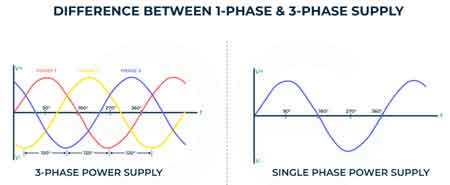
What is Single Phase Power?
Single phase power delivers alternating current through one sine wave, supplying energy for homes, offices, and small industries. It provides efficient, cost-effective power distribution for lighting and appliances, making it the standard system for commercial use.
What is Single Phase Power?
Single phase power is an AC electrical system that operates with one alternating voltage wave, commonly used in residential and small commercial applications.
✅ Supplies energy efficiently for homes and small businesses
✅ Simplifies wiring and reduces installation costs
✅ Supports lighting, heating, and general-purpose loads
How Single Phase Power Works (AC Waveform and Wiring)
Single phase power is an alternating current (AC) electrical system that operates with one voltage waveform. The voltage alternates polarity, producing a smooth sine wave that repeats 50 or 60 times per second—depending on the country’s standard frequency (50 Hz in most of the world, 60 Hz in North America). You can also study the structural and operational aspects of modern distribution grids in our Power System Engineering article.
Electricity is delivered through two wires: a phase (hot) wire and a neutral wire. The phase wire carries current to the load, while the neutral wire returns it to complete the circuit. This simple configuration makes single-phase systems reliable and easy to install for low-to-moderate power needs. To understand how voltage and current relationships are analyzed across electrical networks, see our guide on Load Flow Analysis.
Power System Analysis and Design Course
Arc Flash Analysis/Study Training Course
Power System Fundamentals Course
Short Circuit Analysis/Study Course
Power Calculation Formula:
For purely resistive loads: P = V × I
For loads with reactance (motors, transformers): P = V × I × PF, where PF (power factor) accounts for the phase shift between voltage and current.
The instantaneous power fluctuates twice per cycle due to the sine wave shape, meaning energy delivery varies with time. A graphical representation of this waveform helps visualize how power peaks twice each cycle. For engineers seeking a deeper understanding of power distribution models and transformer behavior, our Power System Analysis and Design section provides detailed insights.
Commercial Applications
Single phase power is the backbone of residential energy distribution. It supplies 120 V or 240 V (split-phase) to operate household devices such as lighting systems, air conditioners, ovens, and small motors. In a 120/240 V split-phase system, a center-tapped transformer provides two 120 V legs that are 180° out of phase—combined to supply 240 V for higher-demand loads like dryers or water heaters.
In small commercial environments—offices, shops, and small workshops—single-phase circuits power general-purpose outlets, HVAC systems, and small machinery. Approximately 90% of North American homes and many small businesses use single-phase electricity due to its simplicity and cost-effectiveness.
Advantages and Limitations
Single phase systems are efficient for modest electrical loads, but they have limitations for heavy-duty use. Because a single AC waveform does not produce a rotating magnetic field, motors require start capacitors or auxiliary windings to begin rotation. These systems may also experience voltage drops, load imbalance, and reduced efficiency under heavy loads.
Solutions include:
-
Installing start/run capacitors for motor applications
-
Balancing loads across circuits
-
Using power factor correction equipment
-
Upgrading to three-phase service for higher-capacity demands
Single Phase vs Three Phase Power
| Feature | Single Phase Power | Three Phase Power |
|---|---|---|
| Voltage Waveforms | 1 | 3 (120° apart) |
| Wires Required | 2 or 3 (split-phase) | 3 or 4 |
| Voltage Stability | Fluctuates with load | More constant |
| Typical Use | Homes, small offices | Industry, large facilities |
| Efficiency | Lower | Higher |
| Equipment Cost | Lower | Higher |
Safety, Grounding, and Protection
Proper grounding and circuit protection are essential for safe operation. In residential wiring, the neutral is bonded to ground at the service panel to prevent overvoltage and shock hazards. Protective devices such as circuit breakers, fuses, and ground fault circuit interrupters (GFCIs) safeguard users from faults and short circuits.
Regular maintenance, load balancing, and adherence to NFPA 70 (National Electrical Code) or CSA C22.1 (Canadian Electrical Code) ensure long-term reliability and safety compliance. Finally, explore our live online Power System Training courses to develop practical skills for designing and maintaining both single-phase and three-phase power systems.
Converting and Upgrading Power Systems
Single-phase power can be derived from three-phase lines by tapping one phase and a neutral wire. Conversely, when higher loads are required, rotary phase converters or variable frequency drives (VFDs) can simulate three-phase output from a single-phase source, allowing heavier equipment to operate in small facilities.
Historical and Global Context
Single phase systems date back to the late 19th century during the evolution of alternating current distribution pioneered by Nikola Tesla. As polyphase systems emerged for industrial use, single-phase systems remained dominant in residential and small-scale applications worldwide due to their simplicity and cost efficiency.
Single phase power remains the most practical solution for everyday electricity needs. Its straightforward design, compatibility with household devices, and adaptability to local standards make it a cornerstone of modern electrical infrastructure. Understanding how it works—and its advantages, limitations, and safety practices—ensures reliable and efficient energy use in homes and businesses.
Related Articles

Phase Rotation Meter
A phase rotation meter determines the sequence of three-phase electrical systems, ensuring correct motor connections and preventing damage to the system. It verifies phase sequence, detects wiring errors, and improves safety in industrial, commercial, and utility power applications.
What is a Phase Rotation Meter?
A phase rotation meter is an indispensable tool for industrial electricians. It ensures the correct sequence in three-phase power systems, preventing potential damage to motors, transformers, and other critical equipment.
✅ Identifies the correct sequence of three-phase power systems.
✅ Prevents motor damage by ensuring proper rotation direction.
✅ Detects wiring faults and improves system reliability.
Power System Fundamentals Training
Short Circuit Study & Protective Device Coordination Training
Arc Flash Analysis/Study Training
By understanding how to use this device, you can guarantee the safety and efficiency of your electrical installations. These systems are widely used in industrial applications because they provide a stable and efficient power supply. The term phase rotation refers to the order in which the phases of an electrical system reach their peak values. This sequence is critical for devices like motors, as it determines the direction in which they rotate. Incorrect phase rotation can result in reverse motor operation, potentially damaging equipment and halting production. A rotational phase tester is specifically designed to detect and indicate the phase sequence, ensuring that systems are installed correctly and function safely. It is a vital tool in electrical engineering, ensuring the proper phase sequence and safe operation of motors and transformers.
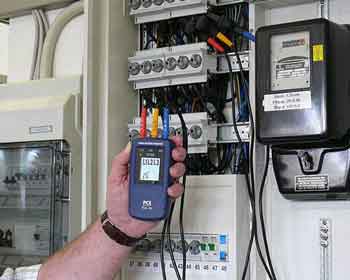
Functionality
The role of this meter is straightforward yet vital. By connecting its test leads to the three conductors of a system, the device measures the sequence of the electrical phases. Many modern meters display results through intuitive interfaces, making them user-friendly even for those less experienced. The ability to verify a sequence quickly and accurately minimizes downtime during installations and troubleshooting. Understanding phase rotation is closely related to load flow analysis, which evaluates power distribution and system performance.
Comparison of Phase Rotation Meters and Other Testing Devices
| Device Type | Primary Function | Advantages | Limitations |
|---|---|---|---|
| Phase Rotation Meter | Determines the three-phase sequence | Quick, accurate phase sequence detection | Limited to phase rotation checks |
| Digital Multimeter | Measures voltage, current, and resistance | Versatile, widely available | Cannot directly detect phase rotation |
| Oscilloscope | Visualizes waveforms and signal timing | Detailed phase and signal analysis | Expensive and requires technical skill |
| Clamp Meter | Measures current flow without breaking the circuit | Easy to use for current measurements | Does not indicate phase sequence |
Addressing Starting Current Challenges
A critical aspect of using equipment is managing the starting current or inrush current. This surge of electricity occurs when devices like motors or transformers are first activated, and it can trip circuit breakers if not properly managed. Understanding the relationship between phase sequence and starting current is essential for maintaining system stability. Properly using tools like devices helps mitigate issues caused by these initial electrical surges. Industrial electricians often use this device in conjunction with power system analysis and design to ensure optimal motor connections.
Frequently Asked Questions
What does it do?
It is a specialized electrical testing device used to determine the direction of the rotating magnetic field in a three-phase electrical system. It identifies the sequence in which the three phases (L1, L2, L3) are arranged, which is crucial for ensuring proper motor rotation and the safe operation of equipment. Proper rotation is crucial for motors, generators, and other rotating equipment, as incorrect rotation can lead to malfunction or mechanical damage. Proper sequence verification is a key concept in power system engineering, helping prevent costly equipment failures.
What are the common applications?
From manufacturing plants to HVAC systems, the applications of testers are vast. These devices are particularly crucial when installing or maintaining machinery reliant on three-phase power, such as industrial compressors and large-scale motors. These machines could operate inefficiently or sustain permanent damage without first confirming the rotation. Additionally, they are widely used in power distribution to verify proper connections between transformers and load equipment.
How do you calculate phase rotation?
It is not "calculated" in a mathematical sense but is rather "measured" or "determined" using a rotation meter or an oscilloscope. Here’s how you determine phase rotation:
Use a Meter:
-
Connect the three test probes of the meter to the conductors (L1, L2, L3) of the system.
-
Turn on the device.
-
The meter will display the sequence as either "ABC" (positive rotation) or "CBA" (negative rotation).
Using an Oscilloscope (Manual Method):
-
Connect the oscilloscope probes to the three phases.
-
Observe the waveform
-
The order in which the waveforms cross zero from negative to positive indicates the rotation.
-
Label the order as ABC or CBA, depending on the sequence.
How to test phase rotation with a multimeter?
A standard digital multimeter (DMM) cannot directly measure rotation, as it lacks the capability to detect the sequence. However, you can indirectly check rotation using the following method:
Identify the Phases:
- Identify the three-phase wires L1, L2, and L3.
Voltage Measurements:
- Measure the voltage between L1 and L2, L2 and L3, and L3 and L1 using the multimeter.
- Note the values. In a balanced system, the voltages should be equal.
Compare Relative Voltages:
- If you have access to two separate points (like motor terminals), turn on the motor and observe its direction of rotation.
- If the motor rotates in the opposite direction of what is intended, the rotation is incorrect, and you should swap two of the three-phase connections (like L1 and L2).
Since a multimeter cannot detect the order of the voltages, it is recommended to use a meter for this task.
How to Check the Phase Sequence with a Meter?
To check the sequence, follow these steps:
Turn Off Power: Ensure the system is de-energized before connecting the meter.
Connect the Meter Probes:
- Attach the meter's probes to the three phases (L1, L2, and L3).
- Ensure the probes are properly connected to avoid false readings.
Turn On Power:
- Energize the system.
Check the Display:
- The meter will display the sequence as either ABC (positive sequence) or CBA (negative sequence).
- Some meters have indicator lights or arrows to show the direction.
Interpret the Results:
- If the sequence is incorrect, it can be corrected by swapping two conductors (such as L1 and L2) to change the rotation.
These steps ensure the proper functioning of motors and other equipment that rely on specific rotation for normal operation.
Electricians can enhance their skills with specialized power system training, which often includes hands-on use of rotation meters and testing tools.
Related Articles
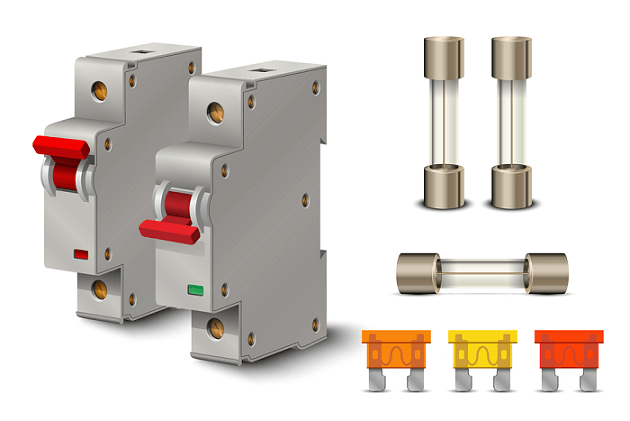
8A and 10A Fuses in Parallel - Not Recommended
8A and 10A Fuses in Parallel can misbehave in circuit protection; unequal resistance skews load sharing and I2t. Learn wiring risks, overcurrent faults, safety implications, NEC guidance, and proper single-fuse sizing alternatives.
What Are 8A and 10A Fuses in Parallel?
A risky parallel connection where dissimilar fuse ratings share current unevenly, undermining coordination and safety.
✅ Current sharing is unpredictable; one fuse may hog and fail first.
✅ Violates coordination; consult NEC/IEC, use a single correctly sized fuse.
✅ Prefer uprated fuse or breaker; avoid paralleling dissimilar ratings.
Connecting 8A and 10A fuses in parallel is a practice that raises many questions about safety and performance in electrical systems. While fuses are designed to protect circuits from overcurrent, mixing different ratings in parallel can lead to uneven current distribution, unreliable protection, and potential safety hazards. This article explores the implications of using fuses with different ratings, such as 8A and 10A, in parallel circuits and offers guidance on proper sizing to ensure safe and efficient operation. Understanding the risks and correct use of fuses is essential for maintaining a reliable electrical system. Professionals can benefit from targeted electrical training to better understand fuse coordination and safe design practices.
In electrical circuits, fuses serve as protection devices, safeguarding equipment and wiring from overcurrent situations that can lead to damage or fires. While fuses are typically sized appropriately for a circuit, there are instances where different fuses, such as 8A fuse and 10A fuse, may be connected in parallel. However, this practice raises several important questions about safety and performance. This article will explore the implications of connecting 8A and 10A fuses in parallel and provide insights into the risks involved. When assessing proposed configurations, an electrical load calculator can help estimate currents and diversity factors for realistic comparisons.
What Happens When 8A and 10A Fuses Are Connected in Parallel?
When an 8A fuse and a 10A fuse are connected in parallel, the current flowing through the circuit will be split between them based on their individual resistance and ratings. Ideally, the total current would be divided in a way that neither fuse exceeds its rated capacity. However, in practice, the 10A fuse will likely carry a larger portion of the current due to its higher rating. This imbalance can lead to premature failure of one fuse before the other, causing unreliable protection for the overall circuit. Accurate fault studies that leverage short-circuit current calculation methods provide crucial context for selecting protective devices.
Is It Safe to Connect 8A and 10A Fuses in Parallel?
It is generally not considered safe to connect fuses of different ratings in parallel. When different-rated fuses are used in the same circuit, one fuse (typically the lower-rated one) is more likely to blow first during an overcurrent event. This can leave the circuit partially protected, as the remaining fuse may continue to allow current through, potentially exceeding safe levels. For this reason, it is always recommended to use fuses of the same rating in parallel circuits to ensure consistent and reliable protection. This risk is exacerbated if devices bridge phases improperly, making knowledge of a phase-to-phase connection essential for avoiding dangerous misapplications.
How Do Fuses Share Current When 8A and 10A Fuses Are in Parallel?
In a parallel setup, the 8A fuse and the 10A fuse share current according to their individual capacities. Because the 10A fuse is rated for a higher current, it will carry more load than the 8A fuse. This uneven distribution of current can result in the 8A fuse blowing under conditions that the 10A fuse would still be able to tolerate. As a result, the circuit could become unbalanced, leading to potential risks of overheating or equipment damage. Engineers often cross-check current levels using a practical 480-volt power and current formula to validate loading assumptions under typical operating conditions.
Why Is It Not Recommended to Use Fuses of Different Ratings in Parallel Circuits?
Using fuses with different ratings, such as 8A and 10A fuses, in parallel circuits is not recommended because it compromises the protection of the electrical system. Since the fuses blow at different thresholds, the lower-rated 8A fuse will blow first, potentially leaving the 10A fuse to handle the remaining current. This scenario could lead to an unsafe condition where the system is inadequately protected from further overcurrent. Furthermore, relying on mismatched fuses increases the risk of equipment damage and failure, as the protection will not be evenly distributed. Selecting comparable devices also depends on understanding rated system values, so the ability to read nominal voltage correctly helps keep components within their intended duty.
What Is the Correct Way to Size Fuses for Parallel Circuits?
The correct approach to sizing fuses for parallel circuits is to ensure that all fuses have the same rating and capacity. This guarantees that the current is evenly shared between the fuses and that all components are protected uniformly in case of an overcurrent situation. In the case of parallel circuits, both 8A fuses or both 10A fuses should be used, rather than mixing them. Properly sized fuses ensure that the entire system operates safely and that the circuit is adequately protected from faults or overloads. For many small installations, especially those on single-phase services, reviewing the basics of single-phase power clarifies how currents split and why matched protection is critical.
In summary, connecting 8A and 10A fuses in parallel is not advisable due to the uneven current distribution and potential safety hazards. It is important to ensure that all fuses used in parallel circuits have the same rating to provide consistent and reliable protection. By following proper sizing and selection guidelines, you can maintain a safer and more efficient electrical system.
Related Articles
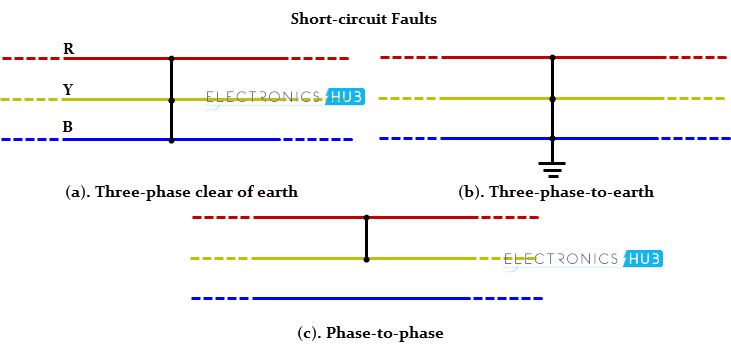
Short Circuit Current Calculation Explained
Short circuit current calculation determines the maximum electric current that can flow during a fault. It’s essential for sizing protective devices, ensuring system safety, and preventing equipment damage. Factors include voltage, impedance, transformer rating, and conductor length.
What is a Short Circuit Current Calculation?
Short circuit current calculation (SCCC) is essential for ensuring the safety and reliability of electrical systems. It:
✅ Ensures proper selection of circuit breakers and fuses
✅ Prevents equipment failure during electrical faults
✅ Complies with NFPA 70E and IEEE standards for system protection
This critical process enables electrical professionals to determine the magnitude of currents that can occur during fault conditions, which in turn helps them design protective measures to prevent system failures. Knowing how to perform a SCCC enables engineers and electricians to select the appropriate protective devices, minimize potential damage, and reduce downtime in both industrial and commercial environments. This vital skill not only safeguards equipment but also improves overall system performance and efficiency. Understanding how to read nominal voltage is essential for anyone working with electrical systems, especially when evaluating safe operating levels.
Understanding Short Circuits
A short circuit (S/C) occurs when an unintended path with very low resistance is created in an electrical circuit. This can be caused by various factors, such as insulation failure, loose connections, or accidental contact between conductors. The sudden drop in impedance leads to a dramatic increase in current flow, potentially causing significant damage to equipment and posing serious safety hazards, including fires and electric shock. In industrial and commercial environments, S/Cs can result in costly downtime, equipment failure, and even risks to human safety. As such, understanding how to predict and mitigate the effects of S/Cs through accurate measurements is fundamental to electrical engineering. Our electrical training programs help professionals master key concepts like single-phase power, voltage drop, and system design.
Short Circuit Current Calculation Reference Table
| Parameter | Low Voltage System | Medium/High Voltage System | Notes |
|---|---|---|---|
| Voltage Level | Less than 1,000 volts | Greater than 1,000 volts | Defines equipment class and calculation complexity |
| Primary Components | Transformers, panelboards, circuit breakers | Generators, transformers, switchgear, relays | Equipment affects fault current magnitude and duration |
| Impedance Source | Transformer impedance primarily | System-wide impedance (including lines and sources) | Total impedance determines fault current |
| Transformer Data Required | kVA rating, impedance percentage, voltage | Same, plus X/R ratio for accuracy | Manufacturer data needed |
| Conductor Impedance | Often neglected or simplified | Must be included for accuracy | Affects overall fault current level |
| X/R Ratio Impact | Minimal impact | Significant impact | Influences peak fault current and breaker selection |
| Calculation Tools | Manual, spreadsheet, lookup tables | Advanced software (ETAP, SKM, EasyPower) | High voltage systems require modelling tools |
| Typical Applications | Commercial buildings, light industrial facilities | Substations, utilities, large industrial sites | Affects safety and design standards |
| Protective Device Sizing | Circuit breakers, fuses | Relays, reclosers, current transformers (CTs) | Devices must be rated for worst-case fault conditions |
The Importance of SCCC
Accurately calculating the short circuit current is crucial for several reasons:
Protective devices, such as fuses and circuit breakers, must be capable of safely interrupting faults. Their interrupting rating must exceed the maximum possible short-circuit (S/C) current at their installation point to prevent equipment damage and ensure operator safety. Electrical equipment, including cables, transformers, and switchgear, must be designed to withstand the thermal and mechanical stresses generated by a short-circuit (S/C). Precise measurements ensure that equipment is rated properly to avoid catastrophic failure. Accurate analysis of system load and balance can be aided by tools such as the electrical load calculator and phase angle calculator.
High S/C currents can affect the stability of the entire electrical system, causing voltage dips, equipment malfunctions, or damage. Accurate calcs help identify areas of potential vulnerability, allowing for the implementation of corrective measures, such as adjusting protection settings or upgrading equipment. Short-circuit current calculations are also necessary for compliance with electrical codes and standards, such as the National Electrical Code (NEC) and IEEE standards. Engineers designing protection schemes should understand the implications of short-circuit current calculations and the risks associated with using 8A and 10A fuses in parallel.
Factors Influencing Short Circuit Current
Several factors influence the magnitude of the S/C current. Understanding these variables is essential to performing accurate measurements:
The impedance of the power source, whether it’s a utility grid or a generator, significantly impacts the fault. A lower source impedance results in a higher S/C current, making it essential to evaluate this parameter during system design. Transformers play a crucial role in limiting S/C currents. The transformer impedance is typically expressed as a percentage, and a higher percentage impedance results in a lower fault current on the secondary side. Accurate modelling of transformer parameters is key to determining short circuits on both the primary and secondary sides of the transformer.
The impedance of cables and busbars connecting various components in the circuit also contributes to the overall system impedance. Longer cables or those with higher resistance will lower the S/C current, while shorter, thicker cables with lower resistance allow for higher currents during faults. Motors, especially large induction motors, can contribute significantly to S/C currents during the initial moments of a fault. This motor contribution is often transient but must be included in the estimation, as neglecting it can lead to underestimating faults and improperly sizing protective devices.
The location of the fault within the system plays a significant role in determining the magnitude of the short-circuit (S/C) current. Faults closer to the power source generally produce higher S/C currents due to the reduced impedance between the fault and the source. From power system engineering to interpreting a three-phase bus line diagram, our resources support both design and troubleshooting tasks.
Calculation Methods
Various methods are employed to calculate the short-circuit current, ranging from simplified approaches to more complex analysis techniques. One common method involves using Ohm’s Law:
Isc = V / Z
Where:
Isc is the short circuit current, V is the system voltage, and Z is the total impedance of the circuit from the source to the fault location.
The total impedance (Z) includes the impedance of the source, transformer, cables, and any other components in the current path. However, in modern electrical systems, more sophisticated software tools are often used to automate SCCCs, particularly in complex systems where manual figuring may be cumbersome or prone to error.
Calculating Short Circuit Current on the Secondary Side
When calculating the short-circuit current on the secondary side of a transformer, it's essential to consider the transformer's impedance. The formula can be modified as follows:
Isc (secondary) = (V (secondary) / Z (transformer)) * 100 / %Z
Where:
Isc (secondary) is the short circuit current on the secondary side of the transformer, V (secondary) is the secondary voltage of the transformer, Z (transformer) is the transformer impedance in ohms, and %Z is the transformer impedance expressed as a percentage.
This calculation is crucial in determining the fault that protective devices on the secondary side of a transformer must be able to handle. It ensures that circuit breakers, fuses, and other protective elements are correctly sized and rated.
The Role of Advanced Simulation Tools
In addition to manual determinations, electrical engineers increasingly rely on advanced simulation tools to model S/C scenarios. These tools can account for complex system configurations, varying load conditions, and different types of faults, providing a more accurate and comprehensive analysis. By utilizing software, professionals can simulate fault conditions under various operational scenarios, enabling better contingency planning and more informed decision-making during system design.
SCCC is an essential practice in electrical engineering that ensures the safe and reliable operation of electrical systems. By understanding the factors that influence faults and employing accurate determination methods, electrical professionals can ensure the proper selection of protective devices, protect equipment from damage, and maintain the stability of the electrical system. Moreover, the use of advanced tools and techniques enhances the precision of these estimations, ultimately contributing to the overall safety, efficiency, and reliability of modern electrical infrastructure.
Related Articles






